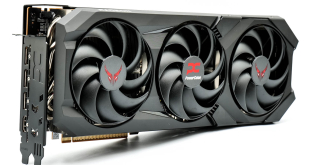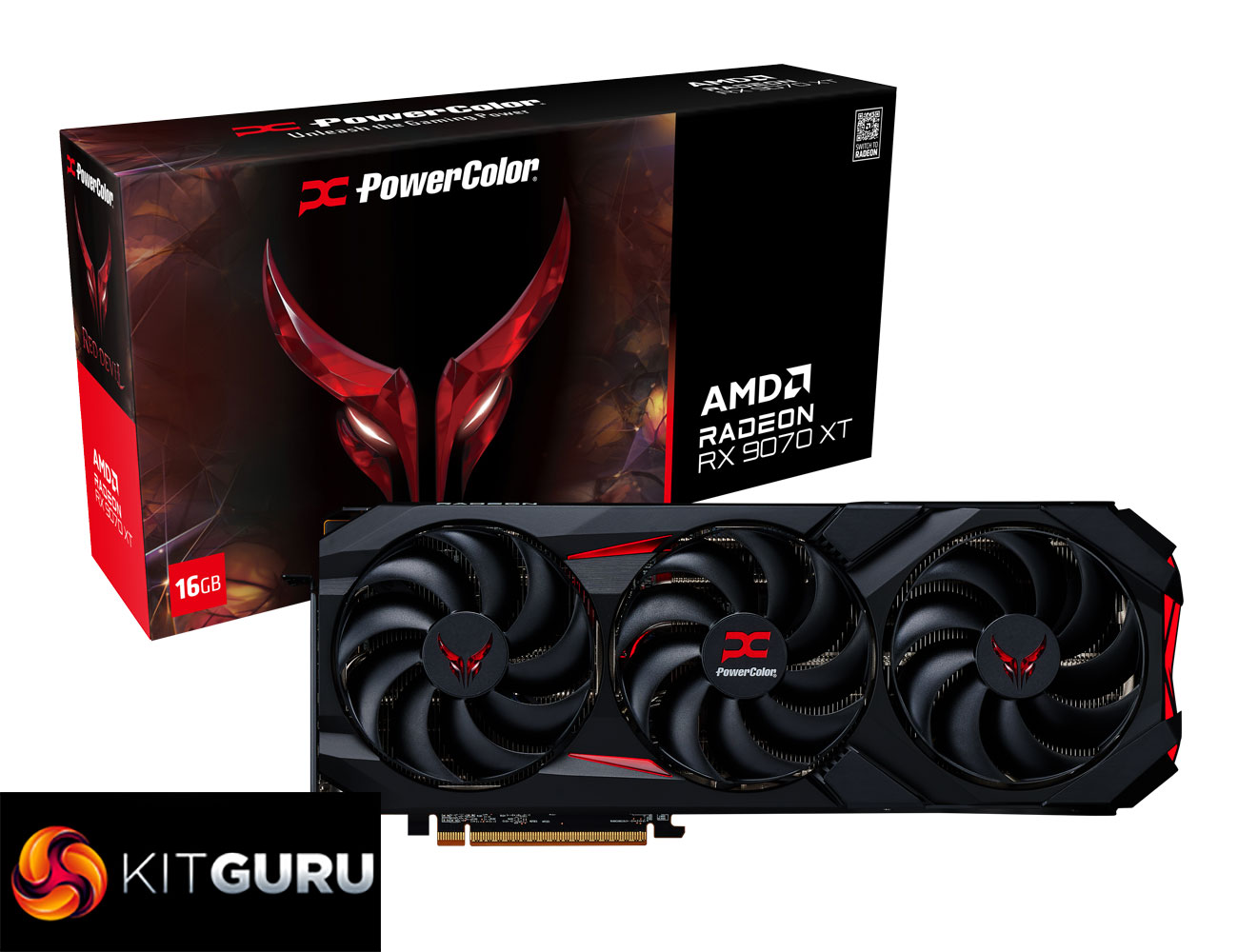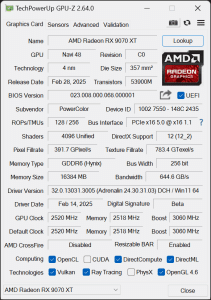
Following our launch-day review of AMD's RX 9070 XT, today it's PowerColor's turn as we assess the Red Devil custom card. Designed to offer a high-end experience, this card comes with a 3060MHz factory overclock, a triple-slot, triple-fan cooler, and it also requires three PCIe 8-pin power connectors. Let's put it through its paces and find out just how good this card is.
At the time of writing we don't have a confirmed UK MSRP from PowerColor for the RX 9070 XT Red Devil, however it is listed for £720 from both Scan and Overclockers UK – putting it in very similar territory to the Sapphire RX 9070 XT Nitro+.
Timestamps
00:00 Intro
00:35 RX 9070 XT recap
01:13 Meet the Sapphire Nitro+
03:08 Nitro+ PCB and heatsink
03:59 PowerColor Red Devil design
05:38 Red Devil PCB and heatsink
06:25 Test setup
06:55 Thermals and acoustics
08:35 Does Sapphire’s backplate increase temps?
09:12 Game benchmarks, clock speed analysis
09:56 Power draw and 12VHPWR testing
11:40 Overclocking/undervolting
12:38 Closing thoughts
| RX 9070 XT | RX 9070 | RX 7900 GRE | RX 7800 XT | RX 7700 XT | |
| Architecture | RDNA 4 | RDNA 4 | RDNA 3 | RDNA 3 | RDNA 3 |
| Manufacturing Process | TSMC N4 | TSMC N4 | TSMC N5 GCD + N6 MCD | TSMC N5 GCD + N6 MCD | TSMC N5 GCD + N6 MCD |
| Transistor Count | 53.9 billion | 53.9 billion | 57.7 billion | 28.1 billion | 28.1 billion |
| Die Size | 357 mm² | 357 mm² | 300 mm² GCD
220 mm² MCD |
200 mm² GCD
150 mm² MCD |
200 mm² GCD
150 mm² MCD |
| Compute Units | 64 | 56 | 80 | 60 | 54 |
| Ray Accelerators | 64 | 56 | 80 | 60 | 54 |
| Stream Processors | 4096 | 3584 | 5120 | 3840 | 3456 |
| Game GPU Clock | 2400 MHz | 2070 MHz | 1880 MHz | 2124 MHz | 2171 MHz |
| Boost GPU Clock | Up to 2970 MHz | Up to 2520 MHz | Up to 2245 MHz | Up to 2430 MHz | Up to 2544 MHz |
| ROPs | 128 | 128 | 192 | 96 | 96 |
| AMD Infinity Cache | 64MB | 64MB | 64MB | 64MB | 48MB |
| Memory | 16GB GDDR6 | 16GB GDDR6 | 16GB GDDR6 | 16GB GDDR6 | 12GB GDDR6 |
| Memory Data Rate | 20 Gbps | 20 Gbps | 18 Gbps | 19.5 Gbps | 18 Gbps |
| Memory Bandwidth | 645 GB/s | 645 GB/s | 576 GB/s | 624 GB/s | 432 GB/s |
| Memory Interface | 256-bit | 256-bit | 256-bit | 256-bit | 192-bit |
| Board Power | 304W | 220W | 260 W | 263W | 245W |
First, let's take a quick look at the specs. The RX 9070 XT is built on the new Navi 48 die, measuring 357mm², and it's worth pointing out this is a monolithic chip, so AMD is not using a chiplet-based design as per RDNA 3. In total, Navi 48 silicon packs in 53.9 billion transistors.
As a full implementation of Navi 48, the RX 9070 XT packs in 64 Compute Units, and each CU houses 64 Stream Processors, for a total of 4096 shaders. There's also 64 Ray Accelerators – one per CU – and 128 ROPs.
As for clock speed, the RX 9070 XT runs notably faster than its sibling, the RX 9070, given it sports a rated game clock of 2400MHz and a boost clock of up to 2970MHz. PowerColor has increased things further however, with a rated boost of 3060MHz.
The memory configuration is the same between both GPUs though, with 16GB of GDDR6 memory clocked at 20Gbps, operating over a 256-bit memory interface, for total memory bandwidth of 645 GB/s. 64MB of Infinity Cache is also present.
Power draw for the RX 9070 XT is rated at 304W Total Board Power (TBP), PowerColor has increased this up to 330W.
 KitGuru KitGuru.net – Tech News | Hardware News | Hardware Reviews | IOS | Mobile | Gaming | Graphics Cards
KitGuru KitGuru.net – Tech News | Hardware News | Hardware Reviews | IOS | Mobile | Gaming | Graphics Cards




